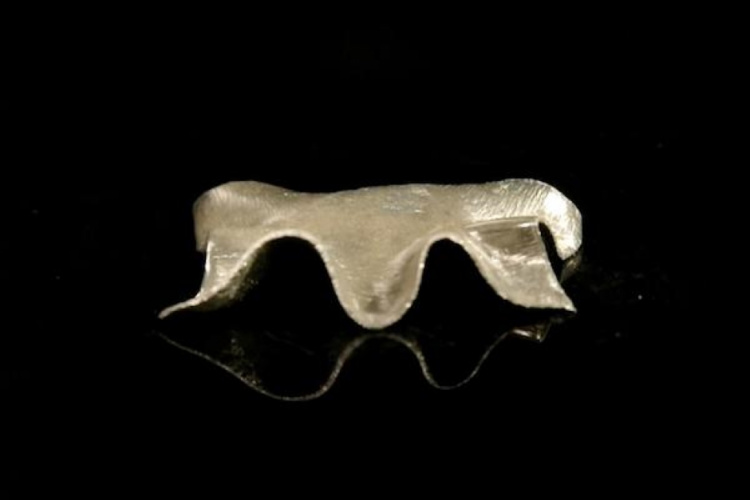
These technologies need stretchable materials that change shape adaptively while relying on portable electronics for power, an ambition realised at Carnegie Mellon University where a new material has been developed that exhibits high electrical and thermal conductivity with actuation capabilities that are unlike other soft composites.
In findings published in Proceedings of the National Academy of Sciences, the researchers report on this intelligent new material that can adapt its shape in response to its environment.
Optical lace gives light touch to soft robots
Moving hydrogels have potential for soft robotics and artificial muscles
“It is not only thermally and electrically conductive, it is also intelligent," said Carmel Majidi, an associate professor of mechanical engineering who directs the Soft Machines Lab at Carnegie Mellon. "Just like a human recoils when touching something hot or sharp, the material senses, processes, and responds to its environment without any external hardware. Because it has neural-like electrical pathways, it is one step closer to artificial nervous tissue."
Majidi and his research team has previously created advanced material architectures using deformable liquid metal micro- and nano-droplets of gallium indium. This is the first time that his lab has combined this technique with liquid crystal elastomers (LCEs), a type of shape-morphing rubber. The team collaborated with LCE expert Taylor Ware, a professor of bioengineering at the University of Texas, Dallas, and his graduate student, Cedric Ambulo.
According to CMU, LCEs are like liquid crystals used in flat-panel displays but linked together like rubber. They have promising functionality as a shape-morphing material because they move when exposed to heat, but they lack the electrical and thermal conductivity needed for shape memory activation.
Although rigid fillers can be incorporated to enhance conductivity, these cause the mechanical properties and the shape-morphing capabilities of LCEs to degrade. To overcome these challenges, the researchers combined the liquid metal gallium indium with the LCEs to create a soft, stretchable composite with what is claimed to be unprecedented multifunctionality.
CMU add that another key feature of the material is its resilience and response to significant damage.
"We observed both electrical self-healing and damage detection capabilities for this composite, but the damage detection went one step further than previous liquid metal composites," said Michael Ford, a postdoctoral research associate in the Soft Machines Lab and the lead author of the study. "Since the damage creates new conductive traces that can activate shape-morphing, the composite uniquely responds to damage."
The material's high electrical conductivity allows the composite to interface with traditional electronics, respond dynamically to touch, and change shape reversibly. It could be used in any application that requires stretchable electronics: healthcare, clothing, wearable computing, assistance devices and robots, and space travel.










McMurtry Spéirling defies gravity using fan downforce
Ground effect fans were banned from competitive motorsport from the end of the 1978 season following the introduction of Gordon Murray's Brabham...